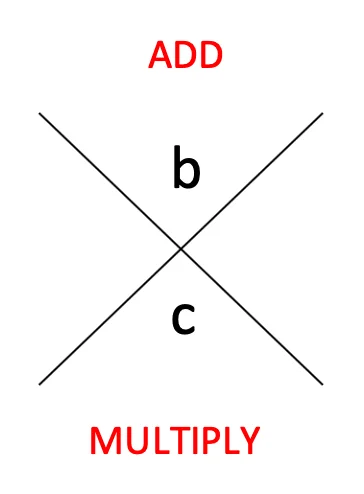Understanding What Multiplies To and Adds To
When it comes to mathematical operations, two common terms that often confuse students are “multiplication” and “addition”. Many people struggle to differentiate between the two, leading to errors in their calculations. So, what exactly does it mean when we talk about what multiplies to and adds to?
How Multiplication Works
Multiplication is a mathematical operation that involves combining two or more numbers to get a total or product. When we say “what multiplies to”, we are essentially asking for the result of multiplying two or more numbers together. For example, when we say “3 multiplies to 4”, we are asking for the product of 3 and 4, which is 12.
Example of Multiplication:
3 * 4 = 12
So, when we talk about what multiplies to a certain number, we are looking for the factors that, when multiplied together, will give us that number as the product.
How Addition Works
On the other hand, addition is a mathematical operation that involves combining two or more numbers to get a total or sum. When we say “what adds to”, we are asking for the result of adding two or more numbers together. For example, when we say “3 adds to 4”, we are asking for the sum of 3 and 4, which is 7.
Example of Addition:
3 + 4 = 7
So, when we talk about what adds to a certain number, we are looking for the numbers that, when added together, will give us that number as the sum.
Now that we understand the difference between multiplication and addition, let’s explore how these operations can be applied in various mathematical problems. By mastering the concepts of what multiplies to and adds to, you can improve your problem-solving skills and tackle complex equations with confidence.
Real-Life Applications
Understanding what multiplies to and adds to is not just important in solving math problems, but it also has real-life applications. For example, when you go grocery shopping and need to calculate the total cost of multiple items, you are essentially using addition to find the sum of the prices. Similarly, when you need to calculate the total area of a rectangular garden, you are using multiplication to find the product of the length and width.
By recognizing how these mathematical operations apply to everyday situations, you can develop a deeper appreciation for the power of numbers and how they shape the world around us.
Conclusion
In conclusion, understanding what multiplies to and adds to is essential for mastering basic mathematical operations. Whether you are solving equations in the classroom or tackling real-world problems, knowing how to multiply and add numbers together is a valuable skill that can benefit you in various aspects of life. By practicing these operations regularly and applying them to different scenarios, you can strengthen your mathematical abilities and become more confident in your problem-solving skills.
FAQs
- Q: How can I improve my understanding of multiplication and addition?
- A: Practice solving math problems involving multiplication and addition regularly to enhance your skills.
- Q: What are some real-life examples of multiplication and addition?
- A: Grocery shopping, calculating area, and determining total expenses are all examples of using multiplication and addition in daily life.
- Q: Why is it important to know the difference between what multiplies to and what adds to?
- A: Understanding the distinction between multiplication and addition helps you accurately solve mathematical problems and apply them to real-life situations.

